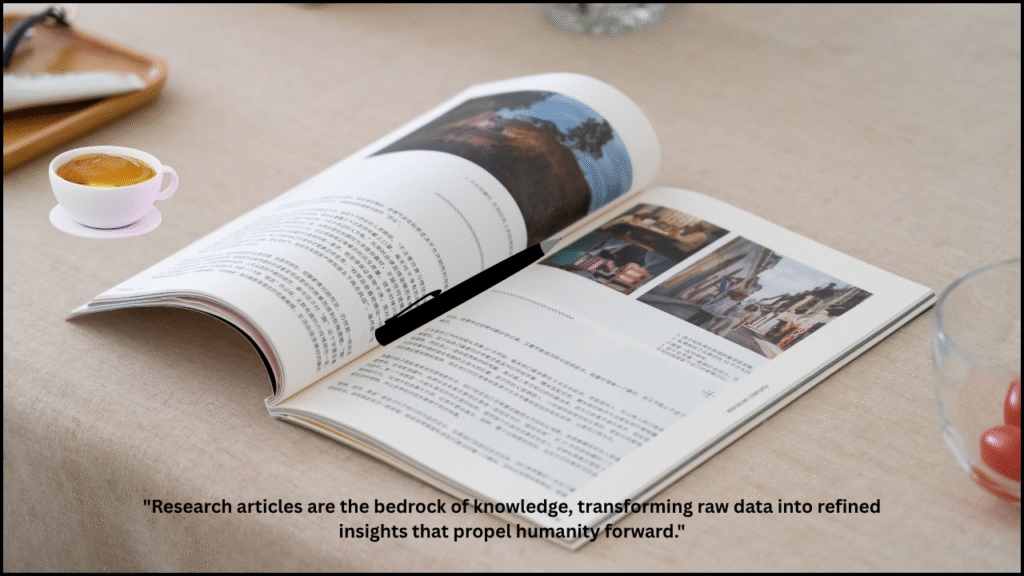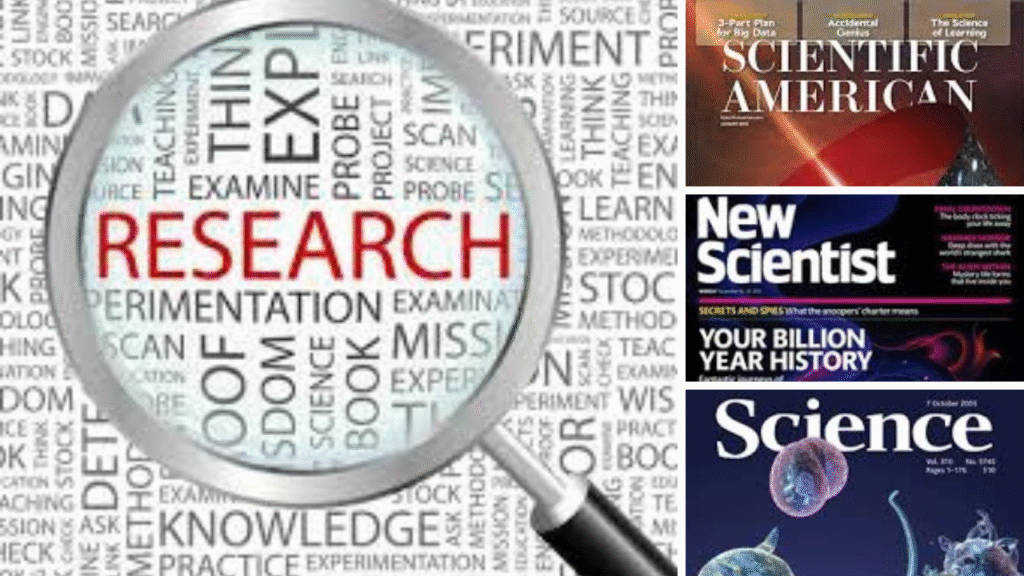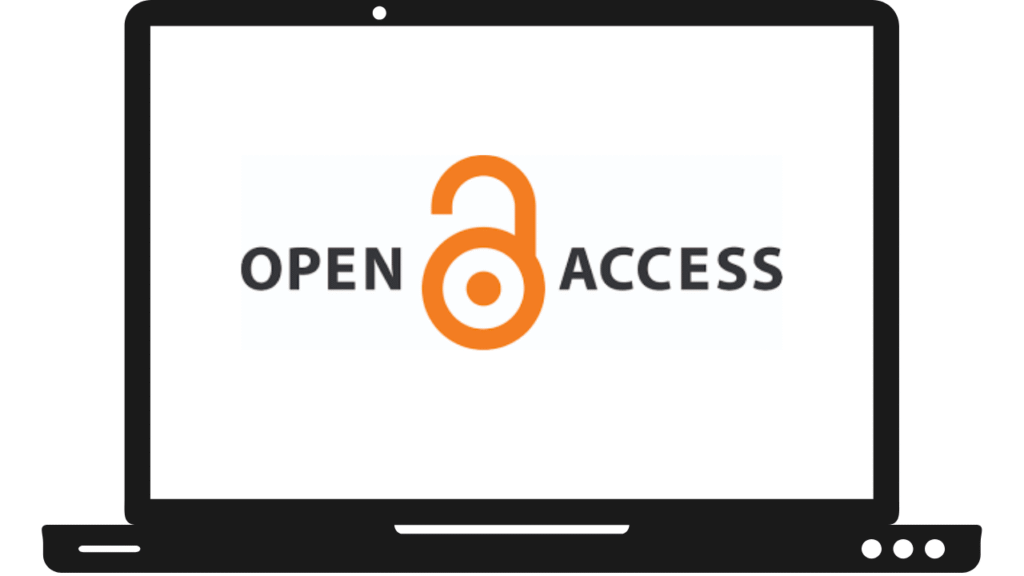Research articles are paramount in today's fast-paced academic and scientific environment; staying current with them isn't optional, it's essential. Scientific knowledge is cumulative, and new ideas and innovations build upon prior findings. Keeping up with new publications ensures informed decisions, fosters innovation, and sustains competitiveness.

Research Articles Database and Platforms
To access reliable research, scholars use several key platforms:
- Multidisciplinary databases like Google scholar, Scopus, Web of Science, and ScienceDirect offer broad coverage and advanced search tools.
- Discipline-specific databases like PubMed (health sciences), ERIC (education), and IEEE Xplore (engineering) cater to specialized fields.
- Open Access databases like DOAJ and free archives like JSTOR (for historical papers) enhance accessibility.

Google Scholar
Google Scholar stands out as an indispensable tool for staying abreast of the latest research. This specialized search engine indexes a vast array of scholarly literature across disciplines, including peer-reviewed papers, theses, books, abstracts, and articles from academic publishers, professional societies, and universities. Its intuitive interface allows researchers to quickly locate relevant studies, track citations, and discover related works, making it a powerful resource for comprehensive literature reviews and continuous learning.
How to Keep Up with the Latest Research
Proactive strategies for continuous learning include:
- Optimizing Search Techniques
- Setting Alerts and Feeds
- Efficient Reading Routines
- Exploring Alternative Research Channels
- Open Access and Paywalls
- Libraries as Access Enablers
1. Optimizing Search Techniques
Effective literature searches start with refining keywords and using database-specific advanced search features. Researchers should use broader and narrower terms to expand their results and better align with their topic.
2. Setting Alerts and Feeds
To avoid missing crucial updates:
- Use email alerts from journals, Scopus, Web of Science, PubMed, and Google Scholar.
- Utilize RSS feeds via feed readers to receive journal table of contents.
- Subscribe to curated newsletters and podcasts like Nature Briefing or Science Vs to get condensed updates.
3. Efficient Reading Routines
Allocate regular time for scanning new articles—ideally daily or weekly. Using text-to-speech tools or creating playlists by topic or urgency helps process large volumes of literature without burnout.
4. Exploring Alternative Research Channels
a. Preprints: Speed Over Scrutiny
Preprints are early versions of research papers shared before peer review. Platforms like arXiv and bioRxiv enable rapid sharing, increase visibility, and foster collaboration.
b. Conference Proceedings and Professional Networks
Academic conferences allow researchers to share early-stage findings and receive real-time feedback.
5. Open Access and Paywalls
a. Open Access
Open Access (OA) publishing models include:
- Gold OA: Free-to-read articles immediately upon publication (often with author fees).
- Hybrid OA: Combines subscription and OA within the same journal.
- Diamond OA: No fees for readers or authors.

b. Paywalls
Paywalls are a system implemented by academic publishers where access to scholarly articles is restricted, typically requiring either:
- Direct payment: Users must pay a fee to access a single article.
- Institutional subscription: Access is granted to individuals affiliated with an institution (like a university) that holds a subscription to the publisher's journals or databases.
5. Libraries as Access Enablers
University libraries bridge this gap by:
- Offering access via institutional subscriptions.
- Supporting interlibrary loans.
- Hosting institutional repositories and Open Educational Resources (OERs).
- Engaging in “library publishing” to support free dissemination.

Comparative Overview of Major Academic Research Article Databases
| Database Name | Primary Discipline(s) | Typical Access Options | Notable Features |
| Scopus | Multidisciplinary | Institutional Subscription | Journal rankings, Author profiles, H-index calculator |
| Web of Science | Multidisciplinary | Institutional Subscription | Comprehensive citation network |
| PubMed | Medicine and Biological Sciences | Free | Full-text links to publisher sites or PubMed Central |
| ERIC | Education | Free | U.S. Department of Education provider |
| IEEE Xplore | Engineering and Computer Science | Free | Includes conference papers, standards, and books |
| ScienceDirect | Multidisciplinary | Free (1.4M OA), Institutional Subscription | Gateway to Elsevier articles |
| DOAJ | Multidisciplinary | Free (Open Access only) | All documents are open access |
| JSTOR | Multidisciplinary | Free (pre-1924 US), Institutional Subscription | Historical articles, scholarships for independent researchers |
The US Research Landscape: A Dissemination Overview
The U.S. government has played a “pivotal role in supporting scientific research articles” since the end of World War II, laying the foundation for a strong federal science funding system. This commitment has led to remarkable advancements, propelling America to the forefront of scientific and technological innovation.
1. Government Role
Agencies such as the National Institutes of Health (NIH), the Centers for Disease Control and Prevention (CDC), and the National Science Foundation (NSF) are crucial. They not only provide consistent funding for both basic and applied research but also set research priorities, coordinate large-scale projects, and facilitate collaboration among researchers nationwide.
2. Dissemination Mandate
The federal government is committed to “open communication and open exchange of data and results” with other agencies, policymakers, and the public. This open exchange is vital for informing policy decisions on critical issues such as human health and safety, the environment, agriculture, and energy. Scientific integrity policies are mandated to prevent the “intentional or unintentional suppression or distortion of scientific information,” ensuring impartiality and objectivity in the communication of research.
3. The Role of Universities and Research Institutions
Universities and research institutions are “at the forefront of scientific discovery” and rely heavily on federal funding to conduct their work. The “production of new knowledge” is considered the “heart of the university's mission,” and the “effective and ongoing dissemination of knowledge” is a “core responsibility”.
Concluding Thoughts on Research Articles
Staying current with the latest research articles is a multifaceted endeavor that demands a strategic, disciplined, and ethically grounded approach. From understanding the foundational role of peer review and leveraging diverse academic platforms to proactively setting up alerts and engaging with cutting-edge preprints and professional networks, researchers have a wealth of tools at their disposal.








